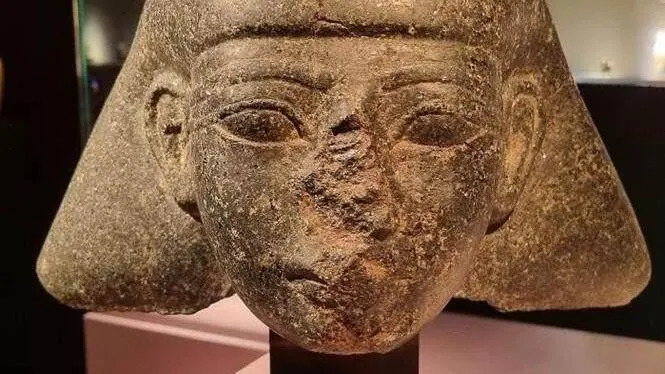World
Netherlands to Return Stolen 3,500-Year-Old Sculpture to Egypt

The Netherlands has announced plans to return a 3,500-year-old sculpture to Egypt, a significant step in addressing the issue of cultural heritage theft. The stone head, believed to represent a high-ranking official from the dynasty of Pharaoh Thutmose III, is thought to have been looted during the Arab Spring, likely between 2011 and 2012. This determination was made by the Dutch Information & Heritage Inspectorate, which confirmed the statue’s illegal export.
The sculpture resurfaced at an arts and antiques fair in Maastricht in 2022. Authorities were alerted to its origins through an anonymous tip, leading to a thorough investigation. Following this, the dealer voluntarily surrendered the piece upon being informed of its stolen status. The Dutch government has expressed its commitment to returning cultural artifacts to their rightful owners, stating that the sculpture holds significant meaning for Egypt’s national identity.
Official Pledge Made During Museum Opening
Outgoing Dutch Prime Minister Dick Schoof reaffirmed this commitment during the opening of the new Grand Egyptian Museum in Giza over the weekend. The museum, which has been in development since 1992, had faced numerous delays, particularly due to the events of the Arab Spring. It has now cost approximately $1.2 billion to complete and houses around 100,000 artifacts. Among these are the complete contents of the tomb of the boy king Tutankhamun and his renowned gold mask.
The Dutch government plans to officially hand over the stone head to the Egyptian ambassador to the Netherlands by the end of this year. The announcement coincides with Egypt’s celebration of its archaeological heritage, marking a pivotal moment in the global conversation surrounding cultural restitution.
Broader Implications for Cultural Heritage
This development has broader implications for Egypt’s efforts to reclaim its cultural heritage. Prominent Egyptologists are optimistic that the opening of the Grand Egyptian Museum will bolster demands for other significant artifacts held abroad to be returned. One of the key items sought is the Rosetta Stone, currently displayed at the British Museum in London, which played a crucial role in deciphering ancient hieroglyphics.
The return of the sculpture is part of a growing international movement that emphasizes the importance of preserving cultural heritage and recognizing the historical injustices associated with its removal. As countries like Egypt advocate for the repatriation of their cultural treasures, the Netherlands’ decision serves as a model for other nations grappling with similar issues.
-

 Science2 weeks ago
Science2 weeks agoInterstellar Object 3I/ATLAS Emits Unique Metal Alloy, Says Scientist
-

 Business2 weeks ago
Business2 weeks agoIconic Sand Dollar Social Club Listed for $3 Million in Folly Beach
-

 Politics2 weeks ago
Politics2 weeks agoAfghan Refugee Detained by ICE After Asylum Hearing in New York
-

 Health3 weeks ago
Health3 weeks agoPeptilogics Secures $78 Million to Combat Prosthetic Joint Infections
-

 Science2 weeks ago
Science2 weeks agoResearchers Achieve Fastest Genome Sequencing in Under Four Hours
-

 Health2 weeks ago
Health2 weeks agoResearcher Uncovers Zika Virus Pathway to Placenta Using Nanotubes
-

 Lifestyle2 weeks ago
Lifestyle2 weeks agoJump for Good: San Clemente Pier Fundraiser Allows Legal Leaps
-

 World2 weeks ago
World2 weeks agoUS Passport Ranks Drop Out of Top 10 for First Time Ever
-

 Top Stories2 weeks ago
Top Stories2 weeks agoChicago Symphony Orchestra Dazzles with Berlioz Under Mäkelä
-

 Business2 weeks ago
Business2 weeks agoSan Jose High-Rise Faces Foreclosure Over $182.5 Million Loan
-

 Entertainment2 weeks ago
Entertainment2 weeks agoJennifer Lopez Addresses A-Rod Split in Candid Interview
-

 World2 weeks ago
World2 weeks agoRegional Pilots’ Salaries Surge to Six Figures in 2025







